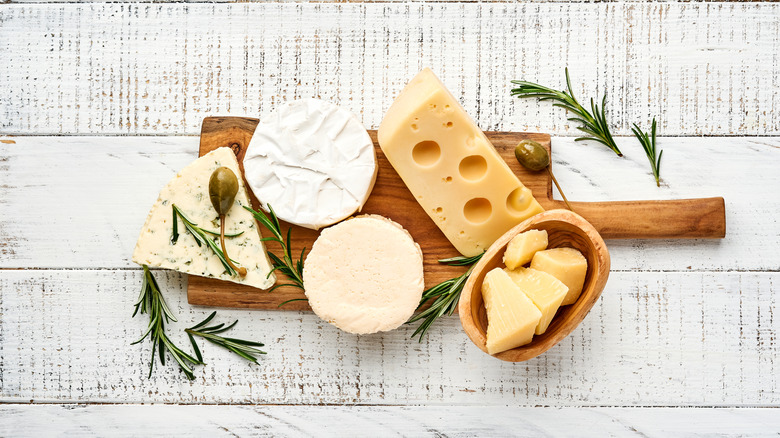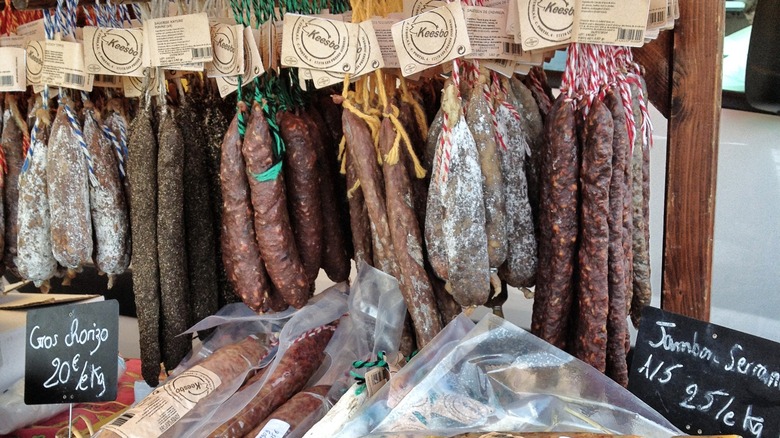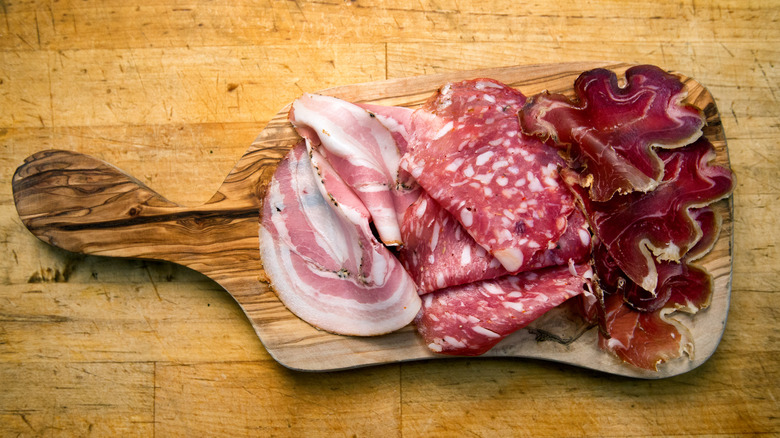Cheese Boards Actually Don't Count As Charcuterie
The past couple of years have seen the rise of the snacky board-based dinner. Butter boards, girl dinner — It doesn't matter what ingredients you have on hand; if you can arrange them on some type of platter, you can call it a board of some kind. But no dining formula falls more recklessly into this uncategorized mayhem than the charcuterie board.
In the United States, if someone is asked to put together a charcuterie board for a party or dinner, it will probably have various deli meats, cheeses, some fruit, slices of bread or crackers, and perhaps a small ramekin of nuts. But these boards are a far cry from a traditional charcuterie board, which comes, both in concept and in name, from France.
The name charcuterie refers to cured and cooked meats, which are meant to be the focus of the platter. In fact, technically, any board containing cheese isn't actually a charcuterie board.
What is charcuterie?
The word charcuterie comes from the French word for chair cuite, which can be translated as "cooked meat," as opposed to the raw meat sold at a butcher shop. A charcuterie is also the name for the shops in France that sell these essential cured meats, like saucisson sec (dried sausage), jambon de Bayonne (which is similar to prosciutto), rillettes, pâtés, or terrines. The majority of these products are made from pork, though you may find duck or rabbit products with the rillettes and pâtés, most famously foie gras. (Are you surprised that foie gras counts as charcuterie, but brie doesn't? Welcome to France).
The art of charcuterie is very strictly defined in France, to the extent that a charcuterie might be an entirely different shop from a boucherie, or butcher shop. But the same store would definitely not sell cheese unless you decided to shop at a large grocery store instead.
How is charcuterie served in France?
In France, charcuterie is typically served at an apéro, a pre-dinner gathering where light drinks and snacks are enjoyed. Olives, nuts, and other small bites are common, but you could also order a charcuterie board when out at a café-bar. However, if you order a charcuterie board, it will come out with nothing but meat and perhaps a small bowl of cornichons. French meats will be common, but Italian and Spanish meats are also commonly found on these boards, such as prosciutto, jamón ibérico, or coppa.
You can order a cheese board separately, but if you want both on one board you'll need to order a planche mixte, or mixed platter. Crackers are very uncommon, but you might get a bowl of baguette slices for the table. However, stacking cheese, charcuterie, and other items on a slice of bread is less common, and they're generally enjoyed on their own, with the exception of soft cheeses and pâtés or other smearable spreads. After all, you have to save room for dinner!



